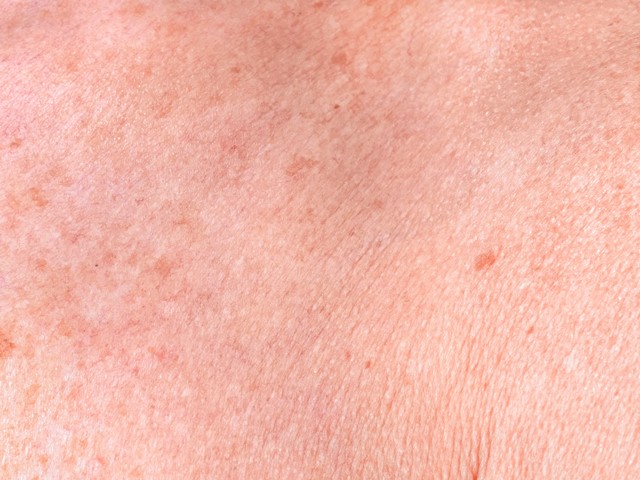What happens to your skin as you get older?

Aging female skin with melasma spots
We are certainly aware of the changes in our skin appearance at the time when we were teenagers vs 30s and above. From the emergence of fine lines, wrinkles, freckles or pigmentation on the skin that are becoming more prominent, until how the skin becomes loosen and loss of volume. All of these may be caused by 2 skin aging phenomena: intrinsic (chronological) or extrinsic (external factors) aging. Intrinsic aging is a natural process that occurs with age and is influenced by genetic factors, accumulation of damaged cells, declination of hormone levels and etc. In contrast, extrinsic aging is a process of skin aging that is triggered by various external factors such as lifestyle, pollution and especially by ultraviolet light or UVR (photoaging). The presented skin appearance that are caused by these two phenomena will look different. The skin resulting from intrinsic aging will look thinner, dry and have fine lines. While the skin resulting from extrinsic aging will look thick with a rough texture, deep wrinkles and more susceptible to skin cancer.
Changes in the Structure of the Outer Skin Layer (Epidermis)
When humans are at the age of 40 and older, the production rate of skin cells in the epidermis decreases and there is a reduction in the nutrients exchange within the skin. Therefore, skin thinning occurs, causing a disturbtion in skin barrier function. These cause:
- Increased penetration of harmful ingredients through the skin
- Water content within the skin is lessen (transepidermal water loss)
- The skin easily become dry, irritated and injured
Besides that, research have proven that aged individuals have lower levels of sebum (skin oil) due to declination of hormone levels. Added with the loss of melanin cells (pigments), resulting in paler skin color. If the skin is often being exposed to UV exposure (photoaged skin), the skin of these individuals tends to display pigmentation conditions such as freckles, melasma, solar keratosis and seborrhoeic keratosis.
Changes in the Structure of the Inner Skin Layer (Dermis)
Skin aging is characterized by wrinkles, loss of skin elasticity and sagging skin. These conditions occur because of a decreased fibroblast cells production, causing the extracellular matrix (ECM) component in the dermis to decline. In brief, the ECM Components serve to provide skin elasticity, skin suppleness and mechanical strength. In addition to the ECM component, there is an imbalance ratio between the production and degradation of collagen within the dermis where collagen production is lesser than collagen degradation. Thus, the levels of collagen type I, IV and VII are lessen, causing wrinkles and skin sagging more prominent. In entrinsic skin aging, UV light causes more damage to the dermis componentmaking the skin becomes roughened and wrinkles looking deeper.
In conclusion, we should start implementing skincare earlier to prevent skin aging. Although the aging process cannot be prevented, we can treat our skin in order to get adequate nutrition, be stimulated to keep producing essential cells and to keep skin looking tight and glowing. Skin treatment can be started by diligently wearing a sunscreen that has an SPF 30+ or 50+, followed by skincare, facials and other aesthetic treatments.
